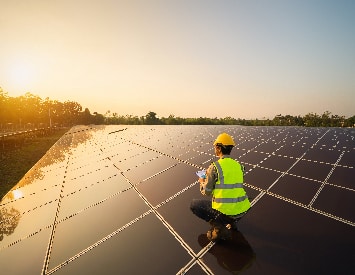Pressure Instrumentation and Measurement
Theory
What is the Difference between Absolute, Gauge and Differential Pressure? From Instrumentation and Control Net.
The following excellent articles are from Emerson Process Management.
Pressure Best Practices - Plants are continuously challenged to be more and more efficient - deliver more with less. How can you reduce initial capital costs, improve plant quality, throughput and availability, while decreasing operating costs? Pressure Best Practices shows you how to use innovative technologies and new field practices to increase your plant efficiency
Density Measurement - Pressure and differential pressure transmitters are often used to measure the density of a fluid. Both types of transmitters measure level based on the principle that pressure (P) is proportional to the level of the liquid multiplied by its specific gravity.
Interface Measurement - Differential pressure (DP) transmitters are used to measure the interface of two fluids that have different specific gravities (S). To make an interface measurement, the overall level must be at or above the low pressure tap at all times. It is important that the level be large enough to create a reasonable DP between the two specific gravity extremes. This measurement can be done with or without remote seals. However, from a maintenance standpoint, it may be easier to use a remote seal assembly; keeping the wet leg at a constant height can be difficult in some applications.
Eliminating the Need for Methods of Additional Process Sealing - According to installation code found in both NEC 501.5(f)(3) and API 14F, process connected device installed in hazardous locations are required to have dual process seals in order to prevent flammable or combustible process fluids from entering the external electrical system - this technical note discusses a solution for this.
Transmitter Diagnostics Reduce Maintenance Costs - A comprehensive article which discusses methods for reducing maintenance costs.
Specify the Right Solution for Vacuum Applications - When a vessel is under a vacuum pressure, it is important to specify the correct transmitter remote seal system to measure level accurately and reliably. Failure to do so will result in output drift or complete system failure. The combination of high process temperature and vacuum process pressure conditions creates additional requirements when specifying the transmitter remote seal system.
Safety Tip
Risks associated with the use of Mercury
Pressure Conversions
Pressure Conversions from ICEweb.
Pressure Unit Conversion - Look up conversion factors or select a conversion table for a particular pressure unit.
Pressure Measurement
Pressure Measurement Glossary - Find an explanation here for pressure measurement terms listed in alphabetical order - from SensorsOne.
Pressure Instruments
Manometers
- Equal Column liquid Manometer
- Inclined Limb Manometer
- Parallax Error - This is an error that can occur if the reading is not read in line with the level of the liquid.
- Capillary Effect - When a small tube is used, it should be noted that the level of the fluid is read at the centre of the tube.
Pressure Gauges
Principal of Operation - from hydraulicspneumatics.com.
Pressure Gauges - A useful article from OMEGA Engineering.
Seven Steps to Pressure-Gauge Selection - Many factors affect proper gauge selection, and if you follow the seven-step process, the task can become simpler and more exact - Thanks to IMPO and Richard Jankura - Dresser Instrument.
Seven Steps to Select a Pressure Gauge - Covers those important considerations required when selecting a pressure gauge - from Ashcroft.
Pressure Gauge Selection Strategy - 7 Key Considerations to Ensure Application Success - Chikezie Nwaoha - In order to maintain the efficiency of pressure gauges in general (bourdon tube, bellows, helix, etc.), a thorough selection strategy should be employed. As such, end-users would be wise to carefully consider pressure gauge selection, as failure to select the correct pressure gauge for an application can result in significant plant downtime. Further, in a worst-case scenario, an improperly specified pressure gauge can fail to measure pressure during an overpressure event, compromising plant safety and potentially resulting in costly damages. In order to improve pressure gauge operating efficiency and service life, there are seven basic selection criteria end-users should consider. Thanks to www.flowcontrolnetwork.com.
Pressure Gauge Selection - When selecting a pressure gauge consideration should be given to a number of parameters which have an effect on gauge accuracy, safety, and utility - from McDaniel Controls.
Demystifying the Pressure Gauge Spec Sheet - How to Calculate the Real - World Accuracy of a Pressure Measurement Device - Tom Halaczkiewicz and Patrick Klima - There is no such thing as an exciting product specification sheet. Filled with rows of numbers and figures and formatting that switches between manufacturers, it is no wonder why a spec sheet makes informed decisions difficult. Under actual operating conditions, it is easy to be unsure of a pressure device's performance and accuracy. One central challenge is that no industry rules govern how pressure gauge manufacturers write their product specs and data sheets. Some companies advertise their performance under specific, controlled conditions. Others bury their actual figures inside dense spreadsheets and complicated formulas. And sometimes, important numbers are not published at all. This article outlines how to cut through the confusion and read a specification sheet to determine the real-world accuracy of a pressure measurement device - from Flow Control.
Pressure Regulators
ICEweb's specific page of everything that you wish to know about Pressure Regulators.
Pressure Transmitters and Sensors
Pneumatic Pressure Transmitter - Pauline Gill - Pneumatic transmitters and pneumatic positioners represent two of the four distinct elements in pneumatic process control systems. Pneumatic transmitters sense process variables such as temperature, flow, pressure, or liquid level and transmit proportional three to 15 pounds per square inch (psi) process signals corresponding to 0 to 100 percent of full range to control instrumentation. Pneumatic positioners receive output signals from pneumatic controllers to position the control valve's opening percentage to keep a process variable at a desired set point - from www.ehow.com.
Pressure Sensing Technology - This useful link from Wikipedia gives a good description of the various sensing technologies.
Pressure Sensor Technologies - Peter Welander - Pressure transducers are everywhere, but do you know what’s inside? Choosing the right technology can be critical, especially in extreme applications - From Control Engineering
Ceramic Sensors Perform well in Tough Applications - John Van Nostrand and Ravi Jethra - The purpose of this paper is to: facilitate the advantages of selecting ceramic pressure measuring cells in applications where plant operations and maintenance personnel may realize optimum process performance and stability through the use of ceramic pressure sensors. Identify and demonstrate the inherent problems of using metal diaphragm pressure cells particularly in vacuum and chemical service. Bring awareness of enhanced performance and stability in pressure measurement to plant maintenance, quality assurance and operations personnel in order to improve their operation and the bottom line - from Endress+Hauser.
Pressure Measurement Advances and Applications - Wally Baker - Improvements in pressure-measurement technologies are opening up new application areas, leading to operational improvements - from the ISA and InTECH.
Identifying Pressure Sensor Problems - How Barometric Pressure, Installation, and Drift Affect Sensor Performance - Elden Tolman - It is common for a pressure sensor to perform well at first and then later fall outside of the acceptable range of performance. Frequently such errors are classified as drift, when in reality there are other forces at play. This article reviews the influence of barometric pressure, installation and drift on sensor performance - from Flow Control.
How Temperature Affects Pressure Sensors - Temperature has very little effect on pressure measurement when it has been properly calibrated and falls within the specified range. In fact, pressure sensors are less prone to temperature variables than other types of sensors, particularly when used for level measurement. However, when the temperature swings beyond a certain point, depending, of course, on the capabilities of the sensor itself, things can get a little dicey.Temperature variations outside the norm can cause accuracy errors and physical failures depending on the circumstances. It is important to choose a sensor that is designed for the temperature gradient for your application - from APG Sensors.
Checklist for Pressure Sensor Selection - 15 Tips to Ensure Performance Meets Your Expectations - Elden Tolman - We have all experienced the frustration of a problematic sensor, even when the supplier tells us everything seems to be working properly. What we often find is that while the sensor may be “working,” it is often not the right sensor for the application. Successful pressure measurement usually comes down to one thing—selecting the right sensor for your application. There are so many considerations that it is easy to overlook a key element until it’s too late. Nearly a decade of working with pressure sensors in various applications has convinced me that the most common reason for problematic pressure measurements is the failure to select the right sensor. Even industry veterans can fall into this fine spun trap. This article presents 15 fundamental considerations when selecting a pressure-sensing device- from Flow Control Network.
Differential Pressure
Differential Pressure Transmitter Performance - An excellent guide from http://www.spitzerandboyes.com.
Guide to Impulse Lines for Differential-Pressure Flowmeters - Good practice in the design and installation of impulse lines (small bore pipes) that connect a differential pressure flow meter to the instrument for measurement of the pressure difference is provided. The guide is intended to assist the designer to avoid known problems with impulse lines that can lead to incorrect measurement - from IDC and NEL.
Comparing Differential Pressure Transmitter Accuracy - Ted Dimm - Differential pressure transmitters are extremely versatile instruments fitting a broad range of applications in various process industries. Accuracy is a key performance measure for any process-measuring device, and is an important factor for proper device selection and maintenance. Differential pressure devices are very versatile, but it is not always easy to understand, calculate, or compare accuracies between devices. This document is intended to help the reader better understand what manufacturers’ accuracy statements mean, what specifications are important for a given application, and how to properly compare various product capabilities - From Honeywell Process Solutions.
Specifying Pressure Transmitters and Transducers
Specifying A Pressure Transducer - How To Select Pressure Range And Device Type - Mitch Berkson and Dave Field - When choosing a pressure transducer for a particular application, usually the first question which arises is: “For what pressure range should the transducer be rated?” This simple question begets a bevy of related ones, namely: “What is the pressure range in which the device typically operates? Does the device occasionally need to measure pressures outside this range? What pressure must the device withstand and still operate within specification when returned to its normal range? What pressure must the device withstand without failing even if it will function properly after returning to the normal operating range?” Closely related to the pressure specification is the type of device to choose - absolute, gage or sealed gage. The following sections will first address pressure selection and then device type - from Sensata.





